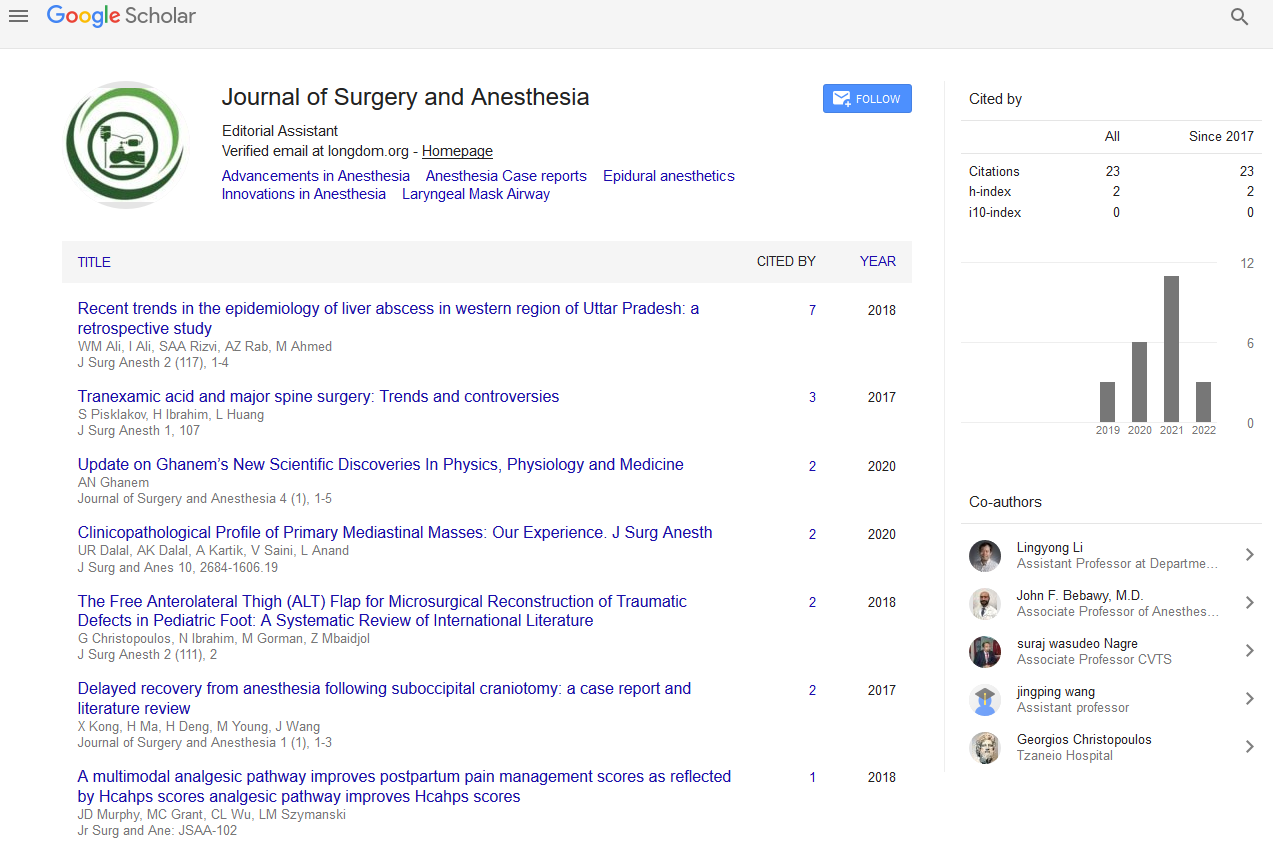Indexed In
- Google Scholar
Useful Links
Share This Page
Journal Flyer

Open Access Journals
- Agri and Aquaculture
- Biochemistry
- Bioinformatics & Systems Biology
- Business & Management
- Chemistry
- Clinical Sciences
- Engineering
- Food & Nutrition
- General Science
- Genetics & Molecular Biology
- Immunology & Microbiology
- Medical Sciences
- Neuroscience & Psychology
- Nursing & Health Care
- Pharmaceutical Sciences
Abstract
Is Lignocaine Preconditioning Effective to Treat Severe Pulmonary Vasoconstriction Induced by Protamine During Cardiac Surgery?
Sanjeev Singh* and Anbarasu Annamalai
Protamine is a low molecular weight protein fraction (5.5-13.0 kDa) that is rich in basic arginine (67%) and lysine amino acids. They are basic polypeptides that neutralize the strongly negatively charged heparin. This study was aimed to explore the effect of lignocaine preconditioning on protamine-induced pulmonary vasoconstriction, which is used to reverse the effect of heparin during cardiac surgery. This was a prospective, single-centre, double-blind and randomised study performed among eighty paediatric patients of either sex in the age group between 1 to 12 years with acyanotic congenital heart disease, scheduled for elective on-pump cardiac surgery under general anaesthesia. The study participants were divided into four groups: Group A non-pulmonary hypertension+lignocaine preconditioning, group B- non-pulmonary hypertension+normal saline preconditioning, group C-pulmonary hypertension+lignocaine preconditioning and group D-pulmonary hypertension +normal saline preconditioning. Haemodynamic parametres, pulmonary inflammatory compounds, and pulmonary function were assessed intraoperatively at 6, 2, and 3-time points, respectively. Routine perioperative data were collected and analysed. Shapiro-Wilk test was used to test if the data were normally distributed. Continuous variables are expressed as mean ± standard deviation (SD) and compared across groups using one-way Analysis of Variance (ANOVA). Categorical variables were expressed as the number of patients together with the corresponding percentage of the total group and analyzed using chi-square tests or Fisher’s Exact test. Spearman’s correlation analysis was performed to evaluate the relationship between pulmonary haemodynamic indicators and inflammatory factors. A P-value<0.05 was considered statistically significant. Group B exhibited increased pulmonary artery pressure (PAP), Mean airway pressure (Paw), Respiratory index (RI), and alveolar-arterial oxygen difference (A-aDO ). Group D exhibited increased Paw, RI, and A-aDO and decreased dynamic pulmonary compliance (Cydn) and oxygen index (OI) after protamine administration. These changes were not observed in groups A and C. Compared with groups A and C groups, plasma thromboxane B2 (TXB2) level in groups B and D were higher, but 6-keto-prostaglandin F1a (6-keto-PGF1a) in groups B and D groups was lower. The incidence of protamine adverse reactions in groups A and C were lower than that in B and D groups respectively. The precondition of lignocaine before neutralization of heparin effectively reverses protamine-induced pulmonary vasoconstriction during cardiac surgery.
Published Date: 2021-03-26; Received Date: 2021-03-03

